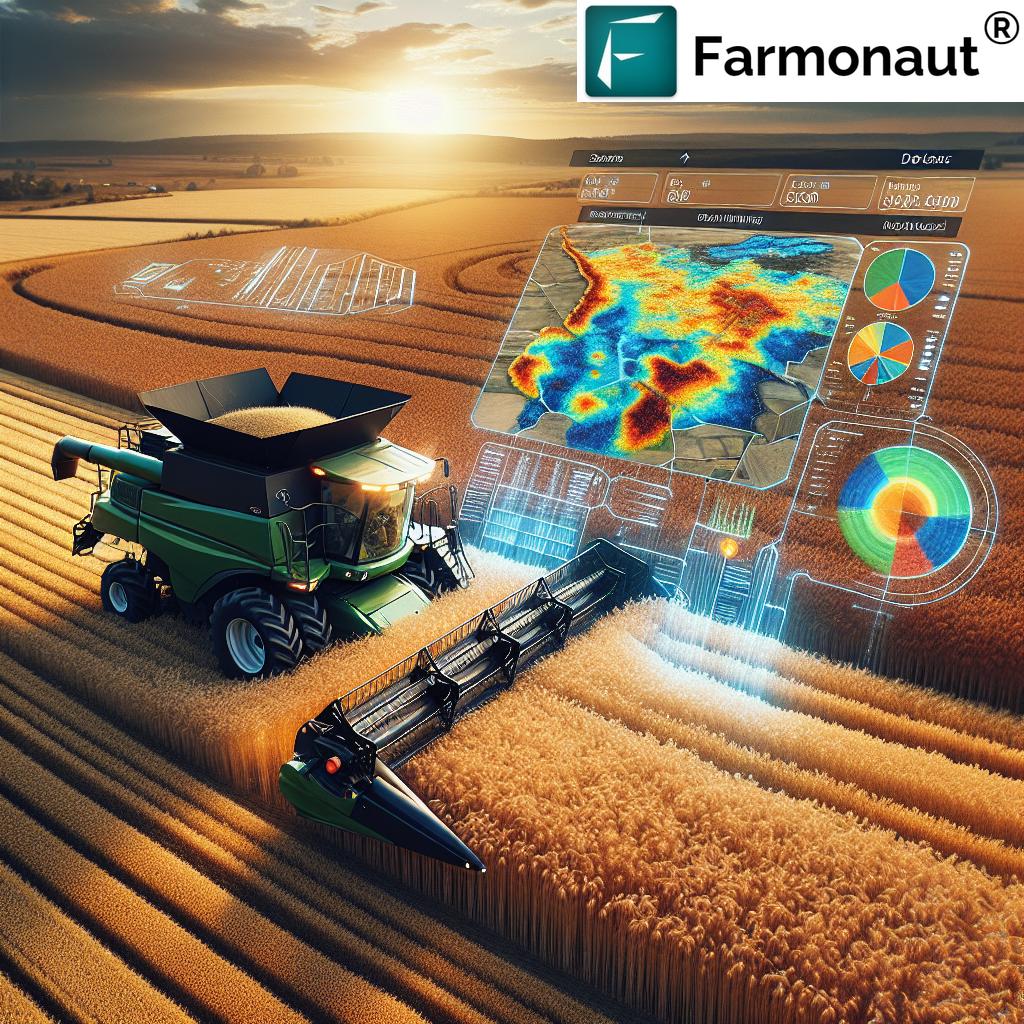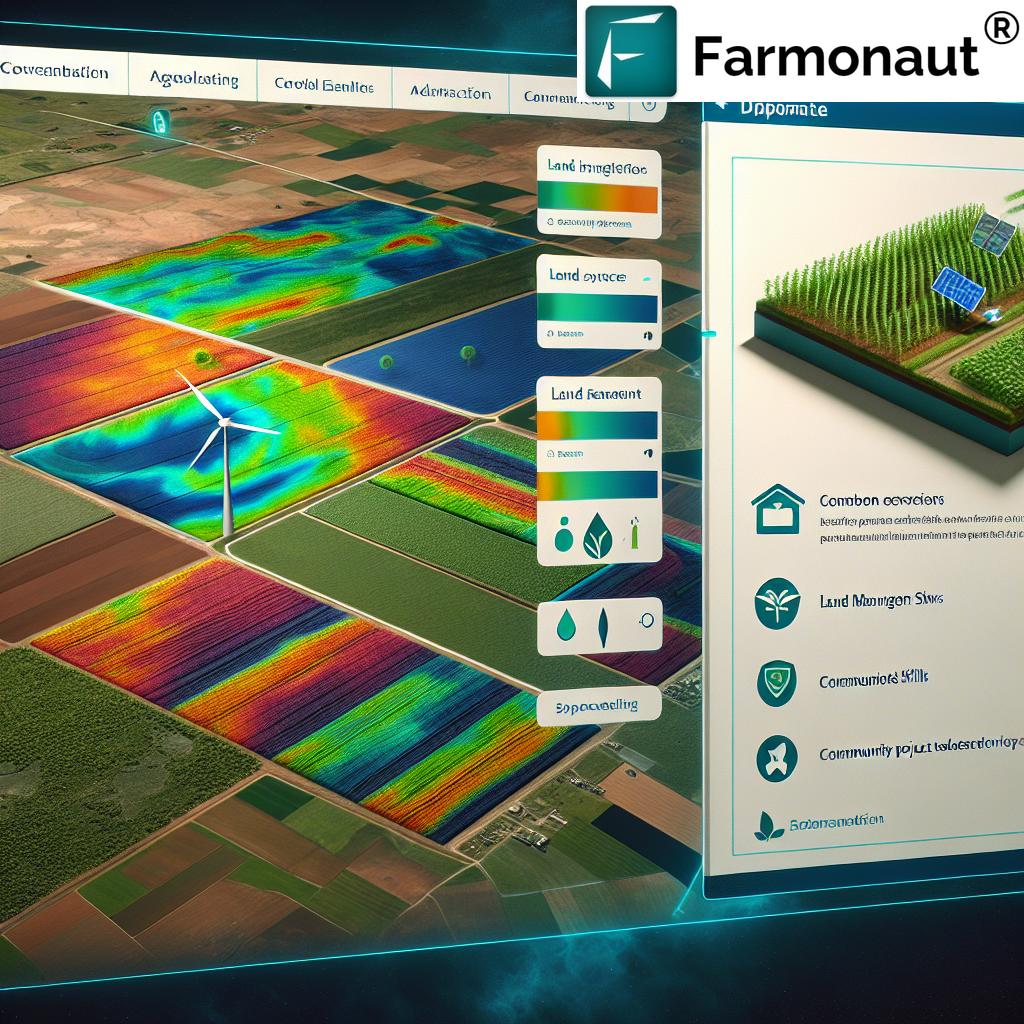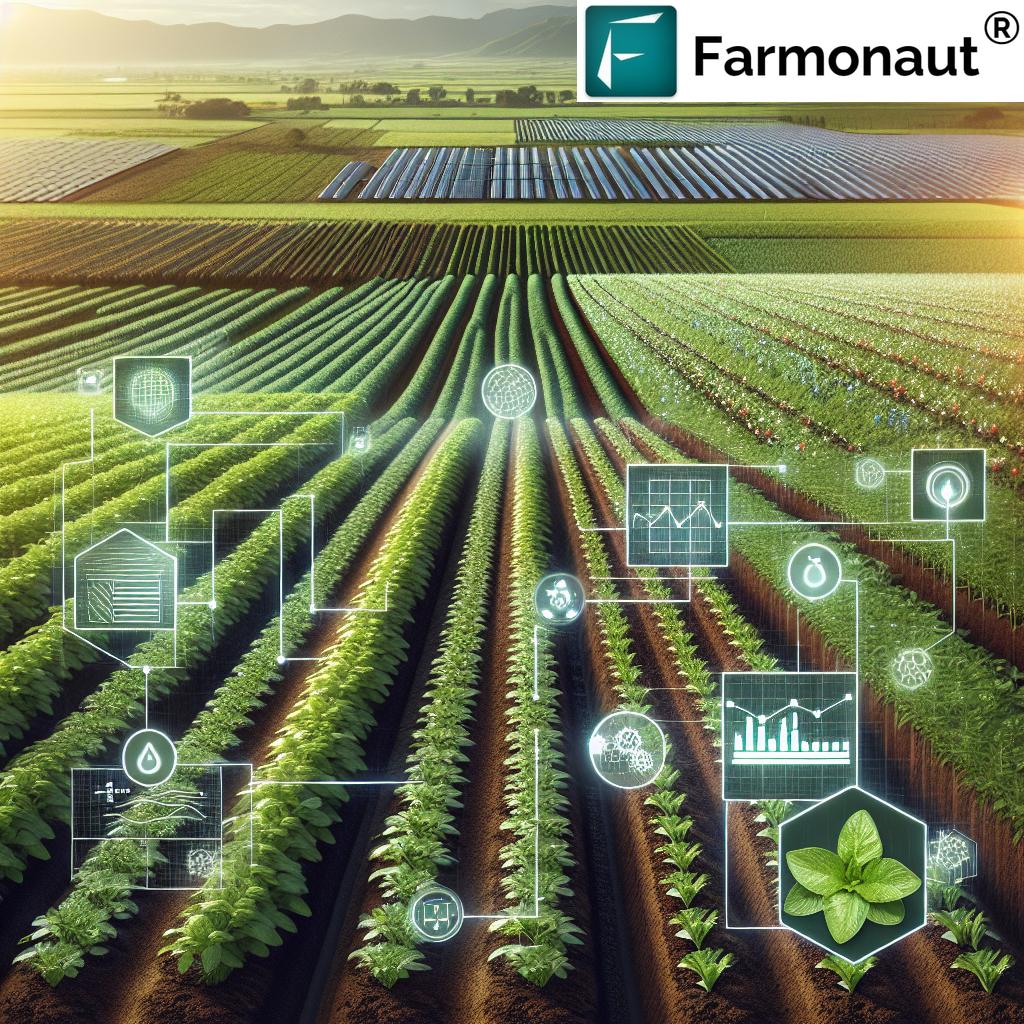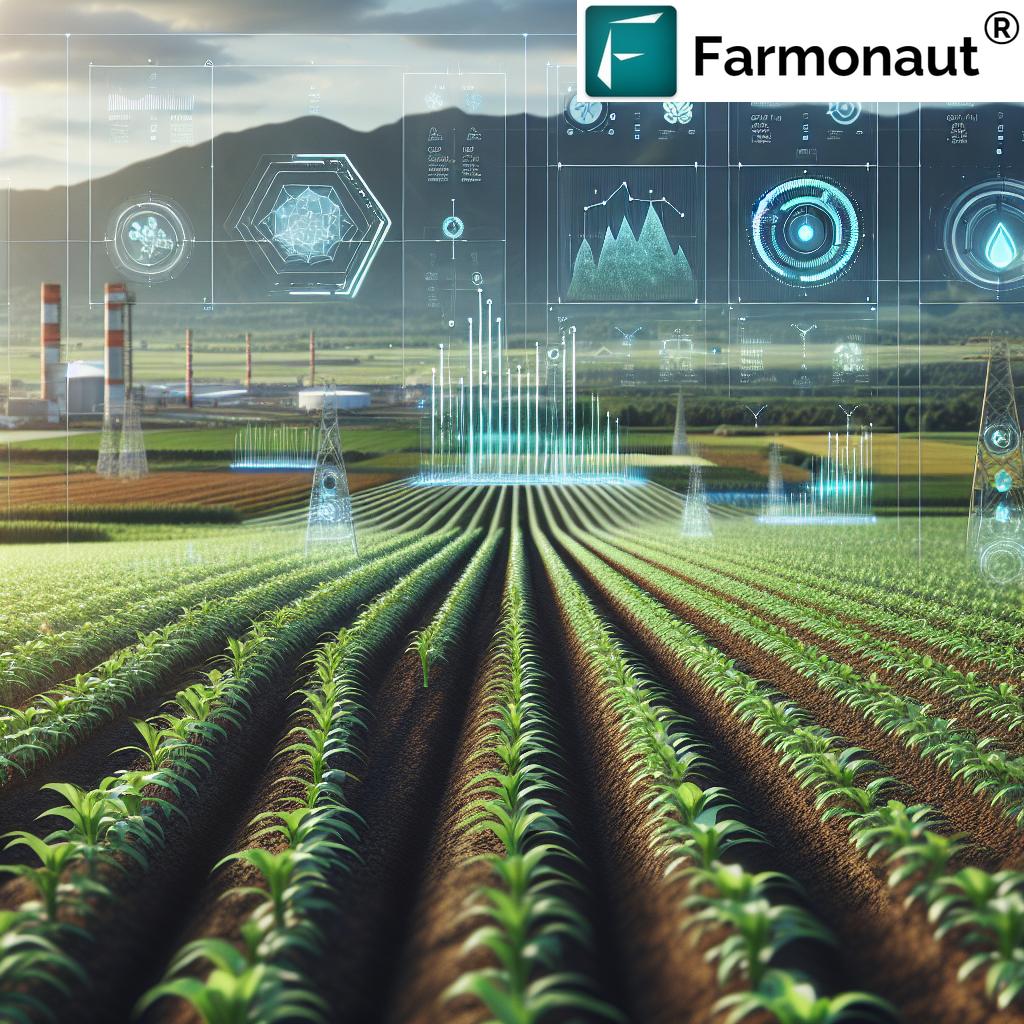Farming Equipment Technician: Top 7 Skills for 2025
“In 2025, over 80% of farming equipment technicians will require expertise in precision maintenance and digital diagnostics.”
Table of Contents
- Introduction: The Changing Landscape of the Agriculture Equipment Technician
- Modern Farming in 2025: Tech Trends Driving the Role
- Why Agriculture Equipment Technicians are the Backbone of 2025 Agriculture
- Top 7 Skills for Farming Equipment Technicians in 2025
- Skills vs Technology Impact Matrix
- Evolving Education & Training
- Looking Ahead: The Future of Agriculture Technicians beyond 2025
- Supporting Equipment Technicians: How Farmonaut Empowers the Agriculture Equipment Ecosystem
- Frequently Asked Questions (FAQ)
- Farmonaut Subscriptions & Resources
Introduction: The Changing Landscape of the Agriculture Equipment Technician
The agriculture sector of 2025 stands at the crossroads of digital transformation and sustainable intensification. Modern farming now leans on complex, interconnected machinery — from automated tractors and planters to combine harvesters and precision irrigation systems. These advanced equipment pieces are not only mechanical marvels but also hubs for software, electronics, and integrated sensors that gather critical data about soil, crops, and machine performance.
As operations expand and technology advances, the role of the agriculture equipment technician (often referred to as the farming equipment technician or construction equipment technician/agriculture equipment specialist) becomes increasingly vital. These professionals are now the backbone of agricultural productivity, ensuring equipment runs efficiently, minimizing downtime, and maximizing yields all year round. The job extends well beyond turning a wrench; it encompasses mastering diagnostics, software updates, and advanced calibration for accurate data collection and impeccable machine functionality.
Modern Farming in 2025: Tech Trends Driving the Role
By 2025, agriculture equipment is a playground for technological convergence:
- AI-guided tractors and planters with real-time GPS adjustment optimize seed placement and minimize waste
- IoT-integrated irrigation systems adapt to soil moisture and weather, cutting unnecessary water use
- Drone-assisted monitoring tracks crop health with multispectral sensors
- Cloud-based diagnostics predict and detect faults before they result in breakdowns
What ties all these innovations together? The skilled hands—and minds—of the agriculture equipment technician. Their technical, analytical, and adaptive skills are essential to keep these systems running efficiently and to deliver the precision farming results on which modern agriculture now relies heavily.
Why Agriculture Equipment Technicians are the Backbone of 2025 Agriculture
In the evolving landscape of agricultural machinery, technicians serve in ways that are critical to the growth and sustainability of the sector:
- Minimizing downtime: Advanced diagnostic tools and predictive software allow for timely repair and maintenance, preventing costly delays in key operations.
- Maximizing productivity: Proper calibration of machines (e.g., seeders, fertilizer systems) helps optimize input use and prevent loss, directly increasing output and profits.
- Supporting sustainability: Technician agriculture expertise ensures efficient use of diesel, energy, water, and other resources—reducing overall environmental impact and meeting regulatory demands.
- Enabling precision agriculture methods: Technicians manage systems that enable field-level management and precise application of crop inputs, using tools such as GPS, sensors, and IoT networks.
As a result, the agriculture equipment technician’s role is no longer optional—it’s absolutely vital to every modern farming enterprise.
Top 7 Skills for Farming Equipment Technicians in 2025
In the wake of digital transformation, these seven essential skills define the agricultural equipment technician profile for 2025 and beyond. Let’s explore each with detailed insights and practical examples.
“Advanced machinery upgrades have increased technician productivity in modern agriculture by 35% since 2020.”
1. Advanced Mechanical and Hydraulic Systems Understanding
At the core of any technician’s expertise remains a comprehensive grasp of the mechanical and hydraulic workings behind automated tractors, combine harvesters, and other complex agricultural equipment.
- Why It’s Vital: As machinery relies on intricate hydraulic circuits for tasks like steering or controlling attachments, deep mechanical knowledge is key for troubleshooting leaks, pressure issues, and component wear.
- 2025 Edge: The rise of active suspension, automatic leveling, and hydraulics-linked AI control means even a small error can result in major yield losses or safety incidents.
- Example: Diagnosing pressure fluctuations in variable rate planters or maintaining robotic weeders’ actuator arms requires both classic mechanic skills and knowledge of AI-assisted motion systems.
- Training: Most technicians will require specific manufacturer certifications in hydraulics and advanced mechanics.
2. Electronics, Sensors & Embedded Systems Expertise
Modern farm machinery is embedded with a labyrinth of wires, PCBs, and sensors that control nearly every operational facet. Technicians must handle failures in climate-controlled cabs, sensor integration, and board swaps in real time.
- Why It’s Vital: Data from these sensors drives yield maps, controls fertilizer dosing, and powers automation. A malfunctioning sensor (soil moisture, temperature, NDVI, etc.) impacts the full ecosystem.
- 2025 Edge: With most new systems integrating AI-powered cameras, health monitoring modules, and environmental sensors, electronics issues have a broader impact than ever.
- Example: Diagnosing wiring faults in GPS antennae for autosteer tractors, or recalibrating a soil moisture system linked to an AI-based advisory dashboard.
- Training: Expect to frequently undergo electronics-focused refresher courses and hands-on diagnostics labs.
3. Software & Digital Diagnostics
Software now forms the “central nervous system” of every major tractor, combine, and seeder—managing everything from fuel injection cycles to autonomous route planning.
- Why It’s Vital: Frequent firmware and software updates add new features and fix bugs, but can cause interface or performance issues if not managed properly.
- 2025 Edge: Near-universal adoption of cloud diagnostics means a technician agriculture professional is the bridge between the machine and remote support systems.
- Example: Debugging a sudden software lockout in an automated combine during peak harvest or reprogramming a precision sprayer via wireless update.
- Training: Includes hands-on training with OEM diagnostic software, CAN bus troubleshooting, and cloud-based maintenance tools.
4. Precision Calibration & Data-Driven Decision Support
Machines in 2025 deliver value because they can operate with precision—but only if properly calibrated and integrated into data-driven management.
- Why It’s Vital: Accurate seed or fertilizer placement depends on synced calibrations between sensors, actuators, and software.
- 2025 Edge: Faulty calibration can result in significant yield loss or overuse of inputs, undermining sustainability efforts.
- Example: Setting up multi-zone spraying (different rates in different soil patches based on NDVI data), or recalibrating a yield monitor for new crop varieties.
- Training: Simulators and real-world field tests form part of calibration and data interpretation education.
5. IoT Networking & Remote Monitoring
With Internet of Things (IoT) connectivity now standard on engines, implements, and entire fleet management systems, keeping gear online and communicating is critical.
- Why It’s Vital: Wireless connections—between the field, the cloud, and apps—drive real-time alerts, predictive maintenance, and task scheduling.
- 2025 Edge: Networking also influences security: hacks or outages in field operations can risk yield or even safety in autonomous operations.
- Example: Ensuring seamless communication between a drone swarm and the central management platform, or reauthorizing devices after a software update.
- Training: Familiarity with Wi-Fi, LoRaWAN, Bluetooth, and cellular telemetry is increasingly essential.
6. Preventive Maintenance & Predictive Analytics
Principled maintenance goes far beyond oil changes—now, sensors constantly monitor vibration, oil quality, and thermal performance, feeding into AI-based predictions.
- Why It’s Vital: Reducing downtime requires both timely hands-on inspections and interpreting what predictive data points mean for real-world scheduling.
- 2025 Edge: Preventive programs in large agriculture enterprises help manage fleets, avoid overlapping failures, and maximize machinery lifespan.
- Example: Using an app to schedule proactive servicing across hundreds of units or analyzing anomalies in vibration signals to prevent gearbox failure.
- Training: Technicians must routinely upgrade their understanding of AI analytics platforms used in agriculture fleet management.
7. Adaptive Communication & Cross-Functional Collaboration
As the last mile between equipment, agronomists, and farm managers, the agriculture equipment technician is as much a project coordinator as a repair expert.
- Why It’s Vital: Communicating complex technical issues to non-technical staff, managing updates from OEMs, and working alongside data analysts take strong interpersonal skills.
- 2025 Edge: Integrated operations mean that poor communication can derail optimized workflows and impact compliance or sustainability programs.
- Example: Collaborating on integrating satellite monitoring data into planter control systems or supporting traceability initiatives for supply chain transparency.
- Training: Communication modules, often workplace-based, round out technical curricula.
Skills vs Technology Impact Matrix for Agriculture Equipment Technicians (2025)
| Skill Name | Brief Description | Estimated Demand in 2025 | Associated Technologies/Machinery | Estimated Training Hours Required |
|---|---|---|---|---|
| Mechanical & Hydraulic Systems | Mastering diagnostics and hands-on repair of engines, transmissions, and hydraulics in ag machinery. | High | Automated tractors, combine harvesters, robotic weeders, planters | 200-350 |
| Electronics, Sensors & Embedded Systems | Installation, testing, and troubleshooting of sensors, PCBs, embedded controllers. | High | NDVI sensors, GPS modules, smart irrigation, AI-assisted planters | 150-300 |
| Software & Digital Diagnostics | Interfacing with onboard software, firmware, and digital diagnostic tools to resolve faults. | Very High | Telematics systems, cloud-based analytics, IoT dashboards | 120-220 |
| Precision Calibration & Data | Ensuring all sensors and actuators are properly set up for data-driven farming accuracy. | High | Variable rate planters, yield monitors, multispectral analysis tools | 80-160 |
| IoT Networking & Remote Monitoring | Establishing and securing wireless networks between machinery and data hubs. | High | Fleet management systems, wireless soil probes, connected drones | 90-140 |
| Preventive Maintenance & Predictive Analytics | Interpreting predictive data trends and conducting hands-on machinery audits. | Very High | AI platforms, vibration sensors, maintenance scheduling apps | 110-180 |
| Adaptive Communication & Collaboration | Translating complex data for teams, managing supplier updates, cross-functional project skills. | Medium | Cloud dashboards, AI reporting tools, traceability software | 80-120 |
Evolving Education & Training for the Modern Agriculture Technician
To meet the demands of the sector, education routes in 2025 look dramatically different than they did a decade ago:
- Specialized Courses: A blend of classic diesel mechanics, hydraulics, and electronics, with mandatory modules in computer networking, software troubleshooting, and diagnostic data interpretation.
- Continuous Learning: Regular upskilling tied to firmware updates, new machinery rollouts, and advances in AI-driven precision agriculture tools.
- Certification & Collaboration: Technicians frequently engage with equipment manufacturers (for updates and technical documentation) as well as cross-functional teams like agronomists when calibrating equipment for new seed varieties or novel soil conditions.
Resources and digital tools, including Farmonaut’s web and mobile app, empower ongoing self-education. Access  for comprehensive satellite imagery, AI-based equipment monitoring, and actionable insights—all critical for modern technicians.
for comprehensive satellite imagery, AI-based equipment monitoring, and actionable insights—all critical for modern technicians.
Mobile accessibility is also crucial. For on-the-go diagnostics or remote consultation, the Farmonaut Android  and iOS
and iOS  apps let agriculture equipment technicians monitor field operations, request support, or view predictive analytics anytime, anywhere.
apps let agriculture equipment technicians monitor field operations, request support, or view predictive analytics anytime, anywhere.
Looking Ahead: The Future of Agriculture Technicians Beyond 2025
The role of the agriculture equipment technician in modern farming is poised to become even more dynamic as we move further into an era of artificial intelligence, autonomous systems, and sustainability-driven policy.
- AI-Driven Systems: Advanced combine harvesters and tractors are being fitted with machine-learning algorithms, making technicians responsible not only for hardware but also the oversight of AI software outputs and system behaviors.
- Remote Diagnostics: Information from far-flung operations will be streamed to central servicing hubs, where predictive analytics preempt mechanical or electronics faults—transforming the role into one of strategic oversight instead of just hands-on repairs.
- Blockchain Traceability: Supply chain and traceability frameworks demand technicians ensure tamperproof data from field to processor, enhancing transparency and food safety. Learn more about Farmonaut’s blockchain-driven traceability solutions.
- Environmental Compliance: Monitoring and reporting environmental impact using real-time tools like carbon footprint dashboards (see Farmonaut Carbon Footprinting), making technicians essential to regulatory compliance and sustainability.
- Fleet Resource Management: As machinery fleets grow, robust oversight tools are necessary for efficiency and safety. Explore Farmonaut’s Fleet Management system for seamless vehicle and equipment tracking.
Technician agriculture professionals who combine traditional mechanic prowess with confidence in digital tools, environmental best practices, and collaborative leadership will remain integral to maximized yields and sustainable growth worldwide.
Supporting Equipment Technicians: How Farmonaut Empowers the Agriculture Equipment Ecosystem
At Farmonaut, our mission is to support the full agriculture equipment ecosystem—from crop health monitoring to equipment logistics and environmental stewardship—by providing advanced, accessible satellite analytics, AI-driven diagnostics, and digital resource management tools.
- Real-time monitoring via satellite: Our platform displays crop health, machine status, and even soil variability with just a few taps—enabling technicians to spot issues and prepare for routine maintenance or rapid repairs.
- AI-Based Diagnostic & Advisory Systems: Instantly interpret multispectral results, receive weather forecasts, and get actionable servicing insights designed to maximize machinery lifespan and minimize downtime.
-
Fleet & Resource Management tools: Keep every machine connected, tracked, and optimally scheduled, so field operations run on time and efficiently.
Learn more about our
Fleet Management solution,
specifically built to support agricultural enterprises and enhance the technician’s oversight of equipment.
-
Blockchain-Based Traceability: Guarantee transparent machine service history and input authenticity for compliance and food safety assurance.
Explore product traceability tools for agriculture equipment and crops.
-
Environmental Impact Monitoring: Gauge and report carbon output, water use, and sustainability KPIs with
Farmonaut carbon footprint solutions
as part of your compliance strategy. -
Large-Scale Farm Management: Agriculture equipment technicians working at the enterprise scale can streamline operations and integrate equipment insights via our
Agro Admin App.
For developers and service providers, our API and API Developer Documentation provide seamless access to satellite images, field data, and machine health monitoring—empowering robust, scalable, and customized maintenance platforms, dashboards, and farm management applications.
By integrating Farmonaut’s satellite-driven insights into daily equipment management, modern farming equipment technicians are set to thrive as agriculture moves boldly forward.
Frequently Asked Questions (FAQ): Farming Equipment Technician in 2025
Q1: What technologies should a farming equipment technician master by 2025?
Technicians should develop expertise in mechanical/hydraulic repairs, electronics and sensor diagnostics, software troubleshooting, calibration, IoT networking, predictive analytics, and advanced communication/collaboration skills. Proficiency with emerging tech such as cloud diagnostic systems, AI analytics, and blockchain traceability will also be highly valued.
Q2: How does precision calibration impact modern agriculture?
Precision calibration in seeders, sprayers, and fertilizer machines reduces waste, maximizes yields, and prevents overuse of inputs—directly supporting environmental stewardship and cost-saving best practices.
Q3: What role does software play in modern farm equipment maintenance?
Software controls diagnostics, system updates, automation, and communication between machinery, resulting in smarter failure prediction, task automation, and optimized operations. Technicians must update, configure, and troubleshoot such software regularly.
Q4: What support/resources does Farmonaut provide for equipment management?
We offer satellite-based monitoring, AI advisory, blockchain-based traceability, fleet/resource management, and environmental impact tools via web, Android, and iOS platforms. These enable real-time diagnostics, strategic planning, and sustainable compliance for agriculture technicians and their teams. See our Web App for details.
Q5: Will AI and automation replace the need for human agriculture technicians?
While AI and automation streamline diagnostics and reduce manual tasks, they also expand the role of human technicians. Advanced systems need oversight, software updates, and real-world troubleshooting beyond what machines can do alone—so the human touch becomes even more crucial.
Farmonaut Subscriptions & Further Resources
Ready to integrate advanced monitoring and management into your agricultural equipment operations? Explore Farmonaut subscriptions tailored for field-scale, enterprise-scale, government, and business users.
Resources:
- Farmonaut Web App — Satellite-driven insights and monitoring tools.
- Farmonaut API — Integrate satellite, crop, and machinery data into your own systems.
- API Documentation — Full developer guide for satellite and weather data integration.


Summary: The Technician Agriculture Role in the Evolving Landscape of 2025
In summary, the agriculture equipment technician in 2025 is a multidimensional professional: a mechanic, software specialist, systems integrator, and sustainability champion rolled into one. As farming grows more sophisticated—with embedded electronics, precision data tools, and complex equipment—their expertise is essential for maximizing yields and enabling sustainability.
Continuous education, adaptive problem-solving, and the adoption of digital platforms such as Farmonaut ensure that these skilled professionals serve as the vital backbone of modern agriculture. By blending technical know-how with innovative approaches and pushing boundaries in efficiency and eco-friendly practices, technician agriculture experts keep our global food systems robust and ready for the challenges of tomorrow.
As artificial intelligence, IoT, and autonomous systems become mainstream, the maintenance and oversight performed by these skilled professionals directly impact not just operational uptime, but also the sustainability and profitability of modern agriculture.
For anyone invested in agriculture—whether as an equipment owner, manager, or technician—adapting to these trends is not just advisable, it is indispensable. The global sector’s future relies on technicians who leverage the best in advanced digital and mechanical systems to meet the growing demands for food, efficiency, and environmental stewardship.










